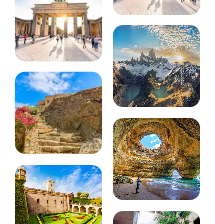8 walks to discover Barcelona
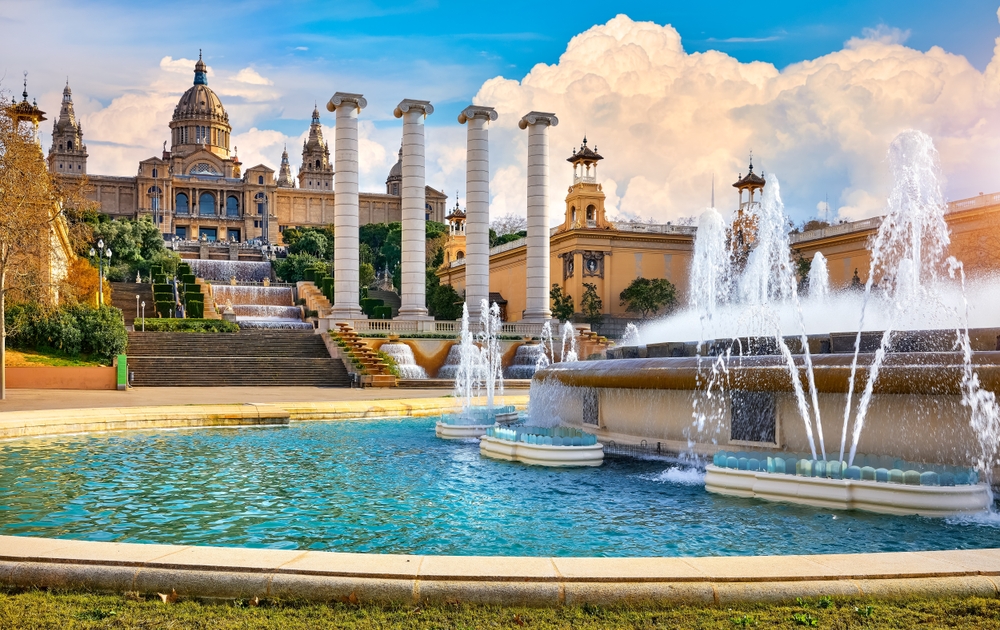
Barcelona, the jewel in the crown of Spanish Catalonia, is an ideal destination for city-hoppers. With its exceptional architectural heritage, authentic districts and Mediterranean panoramas, the Catalan capital offers a mosaic of things to discover on foot. Whether you’re a fan of art nouveau, medieval history or simply looking for a unique atmosphere, these 8 walks will guide you through the many facets of this fascinating metropolis.
Download the audio tour to discover Barcelona on foot and on your own
To explore Barcelona in an immersive and enriching way, let yourself be guided by the Navaway itinerary, which takes you to 27 of the city’s most emblematic sites. This audioguided tour of Barcelona allows you to discover both the must-see monuments and the best-kept secrets of the Catalan capital, all at your own pace and in complete autonomy.
200 audioguided tours for cities all around the world
DownloadSee also the Barcelona guide :
- Top 14 culinary specialities in Barcelona
- Top 5 activities in Barcelona
- Top 7 best hotels in Barcelona
- Celebrate Sant Jordi in Barcelona!
1. The Gothic Quarter, a journey through medieval Barcelona
Barcelona’s Gothic Quarter represents the historic soul of the city, where every stone tells the story of a thousand years of history. This walk through the Barrio Gótico takes you to the heart of medieval Barcelona, with its winding cobbled streets and secret squares. Start your exploration at Santa Eulalia Cathedral, a majestic Gothic building dedicated to Barcelona’s patron saint (Plaça de la Seu, 08002 Barcelona, rated 4.4/5 on Google out of over 32,000 reviews).
Continue on to the Plaça de Sant Jaume, the political heart of Catalonia, home to the Generalitat and the Town Hall. Don’t forget to pass under the famous Pont del Bisbe, a neo-Gothic suspension bridge that provides one of the most emblematic images of the district. Round off your visit with the peaceful Plaça Sant Felip Neri, a haven of tranquillity where time seems to stand still. For a complete immersion in this fascinating district, let yourself be guided by the Navaway trail, which reveals all the secrets of these places steeped in history.
2. Las Ramblas and the Boqueria market, the city’s liveliest thoroughfare
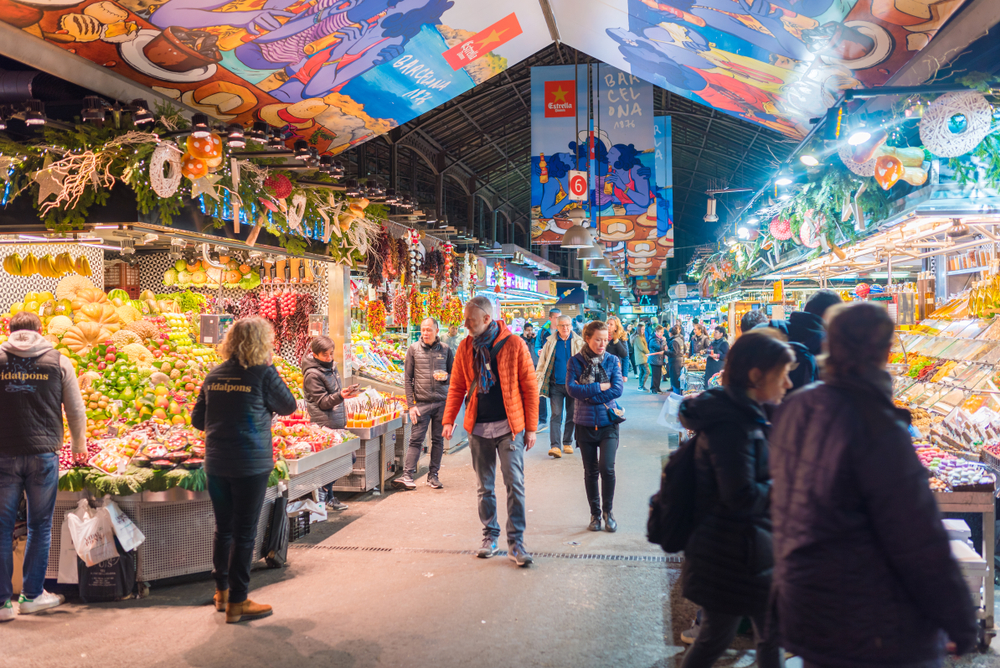
No visit to Barcelona would be complete without a stroll along Las Ramblas, the city’s most famous avenue. This 1.2-kilometre pedestrian thoroughfare links the Plaça de Catalunya to the port, offering a constant spectacle of street performers, florists and urban bustle. Built on the former bed of a dried-up river, Las Ramblas takes its name from the Arabic word “ramla” meaning sand.
The highlight of this stroll is undoubtedly a visit to the Boqueria market, a temple to Catalan gastronomy and a melting pot of Mediterranean colours, flavours and aromas (La Rambla, 91, 08001 Barcelona, rated 4.2/5 on Google out of over 85,000 reviews). You can also take the time to admire the Palacio de la Virreina, a splendid 18th-century Baroque building. The Navaway itinerary will accompany you on your discovery tour, so you don’t miss out on any of the hidden treasures of this legendary avenue.
3. Parc Güell, the fantastic world of Antoni Gaudí
Perched high above Barcelona, Parc Güell is one of Antoni Gaudí’s most enchanting creations. This architectural walk takes you into a fairytale world where nature and art blend harmoniously. Start your visit at the famous Dragon Staircase, guarded by the emblematic salamander covered in colourful mosaics (Carrer d’Olot, s/n, 08024 Barcelona, rated 4.2/5 on Google out of more than 240,000 reviews).
The main terrace offers breathtaking panoramic views of Barcelona and the Mediterranean, and features the famous snaking bench decorated with trencadís, Gaudí’s favourite mosaic technique. The park’s gardens invite you to stroll along winding paths and organic constructions that seem to spring naturally from the ground. This stroll through Gaudí’s world is particularly magical in the late afternoon, when the golden light illuminates the Catalan architect’s creations. Don’t hesitate to visit Barcelona with the Navaway app to enhance your discovery of this unique place in the world.
4. The Eixample and Passeig de Gràcia, temple of Catalan modernism
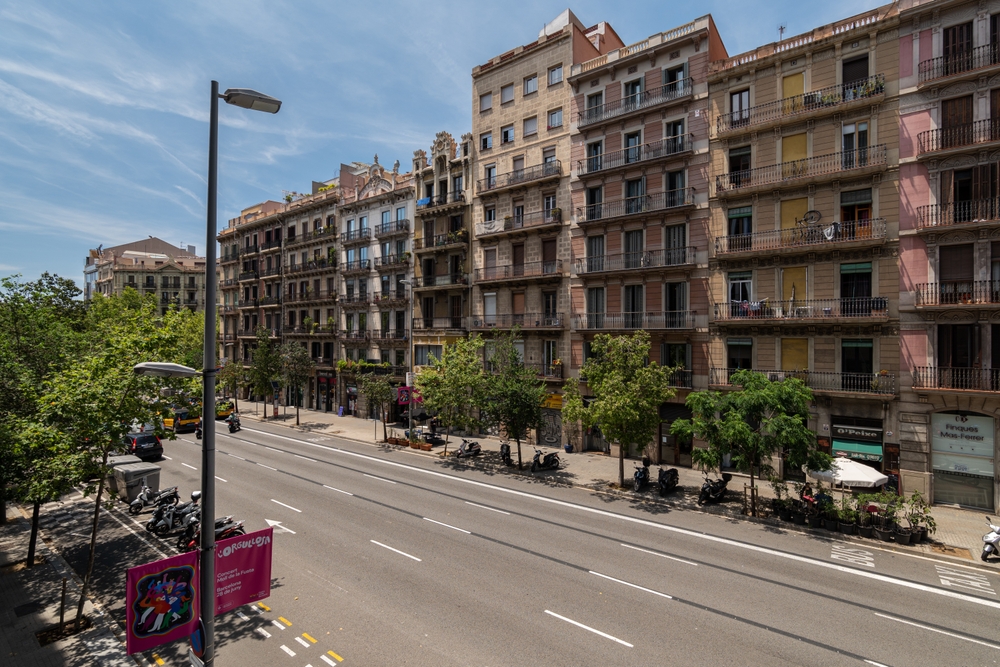
The Eixample district is the heart of Catalan Modernisme, home to some of the finest examples of this revolutionary architecture from the early 20th century. This exceptional architectural tour focuses on the prestigious Passeig de Gràcia, a veritable open-air museum of the creations of Gaudí and his contemporaries. Admire Casa Batlló (Passeig de Gràcia, 43, 08007 Barcelona, rated 4.4/5 on Google with over 75,000 reviews), a dreamlike work of art with changing reflections that evoke a sleeping dragon or the depths of the sea.
A few steps further on is Casa Milà, also known as La Pedrera, Gaudí’s last civil work, with undulating forms that defy the laws of geometry (Provença, 261-265, 08008 Barcelona, rated 4.4/5 on Google for over 55,000 reviews). A stroll through the Eixample also reveals other Modernista wonders such as Casa Amatller and Casa Lleó Morera, which together form the famous “manzana de la discordia” (block of discord). The Navaway itinerary guides you through these masterpieces to understand the aesthetic revolution that transformed Barcelona at the turn of the century.
5. El Born and la Ribera, authentic Barcelona
The El Born district embodies the artistic and bohemian soul of contemporary Barcelona, a successful blend of historical heritage and modern creativity. This stroll along the Ribera will introduce you to an authentic Barcelona, far removed from the usual tourist circuits. Start at the majestic basilica of Santa Maria del Mar, a marvel of Catalan Gothic art nicknamed the “People’s Cathedral” (Plaça de Santa Maria, 1, 08003 Barcelona, rated 4.5/5 on Google out of over 18,000 reviews).
Then stroll along the Passeig del Born, a former medieval tournament arena now transformed into a shady promenade lined with tapas bars and designer boutiques. The El Born cultural centre is well worth a visit for its exhibitions devoted to Barcelona in the 17th and 18th centuries. This lively district reveals the everyday life of the people of Barcelona, with its lively terraces, artists’ studios and cobbled streets steeped in history. The Navaway itinerary reveals all the secrets of this vibrant creative district.
6. Montjuïc, between panoramic gardens and Olympic heritage
Montjuïc mountain is one of Barcelona’s most beautiful nature walks, combining green spaces, exceptional views and a wealth of culture. This 173-metre-high hill was completely redeveloped for the 1929 Universal Exhibition and then for the 1992 Olympic Games. Start your ascent from the Plaça d’Espanya, past the former bullring, now a shopping centre, to the gardens of the Mirador de l’Alcalde.
These Mediterranean gardens offer breathtaking views of the port and the Mediterranean, while Montjuïc Castle (Carretera de Montjuïc, 66, 08038 Barcelona, rated 4.1/5 on Google for over 25,000 reviews) tells the story of the city’s military history. Don’t forget the famous Font Màgica, a musical and illuminated fountain that has been delighting visitors since 1929 (Plaça de Carles Buïgas, 1, 08038 Barcelona, rated 4.3/5 on Google for over 35,000 reviews). This stroll around Montjuïc can easily be complemented by a visit to the National Art Museum of Catalonia (MNAC) or the Joan Miró Foundation. To make the most of your visit to this exceptional site, follow the advice in the Navaway itinerary specially designed for exploring Barcelona.
7. Barceloneta and the seafront, between maritime tradition and modernity
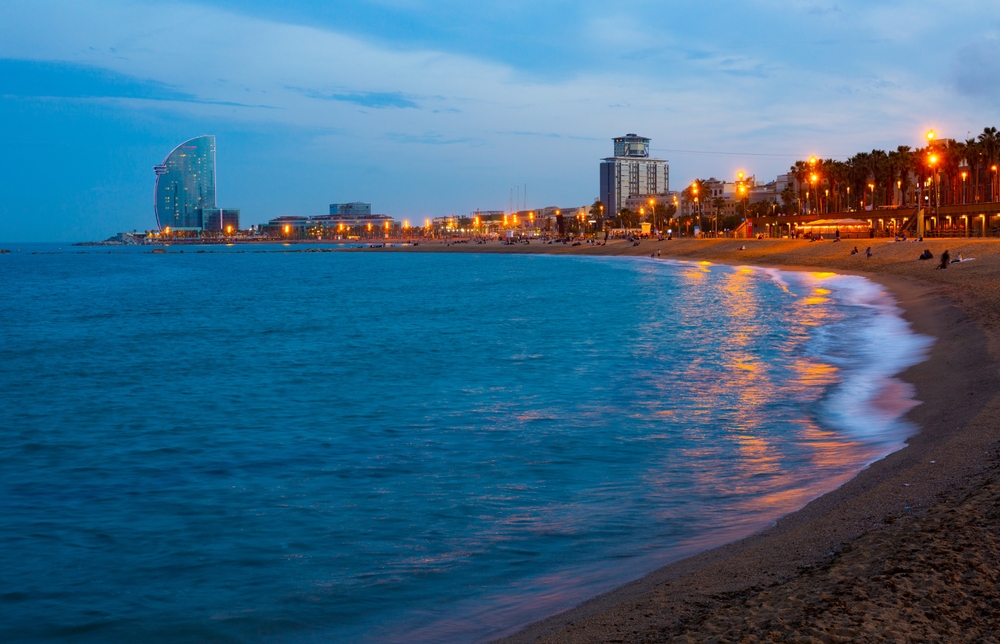
The Barceloneta district transports you into Barcelona’s traditional maritime world, where the scents of iodine mingle with the flavours of Catalan cuisine. This stroll along the seafront reveals a little-known side of the Catalan capital, between its fishermen’s heritage and its ultra-modern Olympic facilities. Start your discovery from the Port Vell, a former commercial port transformed into a yachting marina, where the statue of Christopher Columbus is enthroned pointing towards the Mediterranean (Portal de la Pau, s/n, 08001 Barcelona, rated 4.1/5 on Google out of over 8,000 reviews).
Then walk along the beaches of Barceloneta to the Olympic Port, admiring the urban transformation carried out for the 1992 Games. The chiringuitos (beach bars) offer authentic maritime cuisine overlooking the azure waters of the Mediterranean. This seafront promenade stretches as far as the modern district of Poblenou, nicknamed “Barcelona’s SoHo” for its former industrial warehouses converted into lofts and cultural spaces. The Aquàrium de Barcelona (Moll d’Espanya del Port Vell, s/n, 08039 Barcelona, rated 4.0/5 on Google with over 35,000 reviews) is a perfect stop-off for families during this maritime exploration.
8. Gràcia and its secret squares, a village spirit in the heart of the metropolis
The Gràcia district has carefully preserved its Catalan village soul, despite becoming part of the greater Barcelona area in the 19th century. This stroll through the steep streets of Gràcia reveals an intimate and authentic Barcelona, punctuated by shady squares and colourful facades. Start your visit at Plaça de la Vila de Gràcia, the beating heart of the district, where the clock tower stands as a symbol of the district’s past independence (Plaça de la Vila de Gràcia, 08012 Barcelona).
Then explore the Plaça del Diamant, immortalised by the writer Mercè Rodoreda, or the picturesque Plaça del Sol, a night spot for Barcelona’s youth. The streets of Gràcia are full of alternative shops, bohemian cafés and artists’ studios that perpetuate the district’s creative spirit. Every August, the famous Festa Major de Gràcia transforms the streets into ephemeral works of art, a showcase for the collective creativity of the locals. This walk can be extended to Parc Güell, which is accessible from the heights of Gràcia. To make sure you don’t miss out on the unique atmosphere of this district, follow the recommendations of the Navaway itinerary for visiting Barcelona.
In conclusion, these 8 walks offer a complete panorama of the many facets of Barcelona, from its rich historical heritage to its contemporary creativity. Each itinerary reveals a different personality of the Catalan capital, inviting you to discover it anew. To further enhance your exploration of this fascinating city, don’t hesitate to let yourself be guided by the Navaway app, which will accompany you on each of your discoveries of Barcelona with historical commentaries and enriching anecdotes.
Frequently asked questions
How long will it take to do these 8 walks in Barcelona?
Each walk takes between 2 and 4 hours, depending on your pace and the visits you wish to make. To discover all 8 itineraries, allow 4 to 6 days in Barcelona, which also allows you to enjoy the atmosphere of the city between visits.
When is the best time to take these walks in Barcelona?
Spring (April-May) and autumn (September-October) offer ideal conditions, with pleasant temperatures and fewer crowds. Summer can be hot, but allows you to take full advantage of the seaside walks. Winter remains mild in Barcelona, perfect for indoor cultural visits.
Are these tours suitable for families with children?
Absolutely! Most of the city’s itineraries are suitable for pushchairs, especially the strolls along Las Ramblas, in the Eixample and in Barceloneta. Parc Güell and Montjuïc are perfect green spaces for children. Only the Gothic Quarter has a few cobbled streets that are harder to access.
Do I need to book in advance to visit the monuments?
For the most popular sites, such as Parc Güell, Sagrada Família, Casa Batlló and Casa Milà, online booking is highly recommended, especially in high season. The other sites mentioned in the walks are generally freely accessible or with reduced waiting times.
200 audioguided tours for cities all around the world
Download